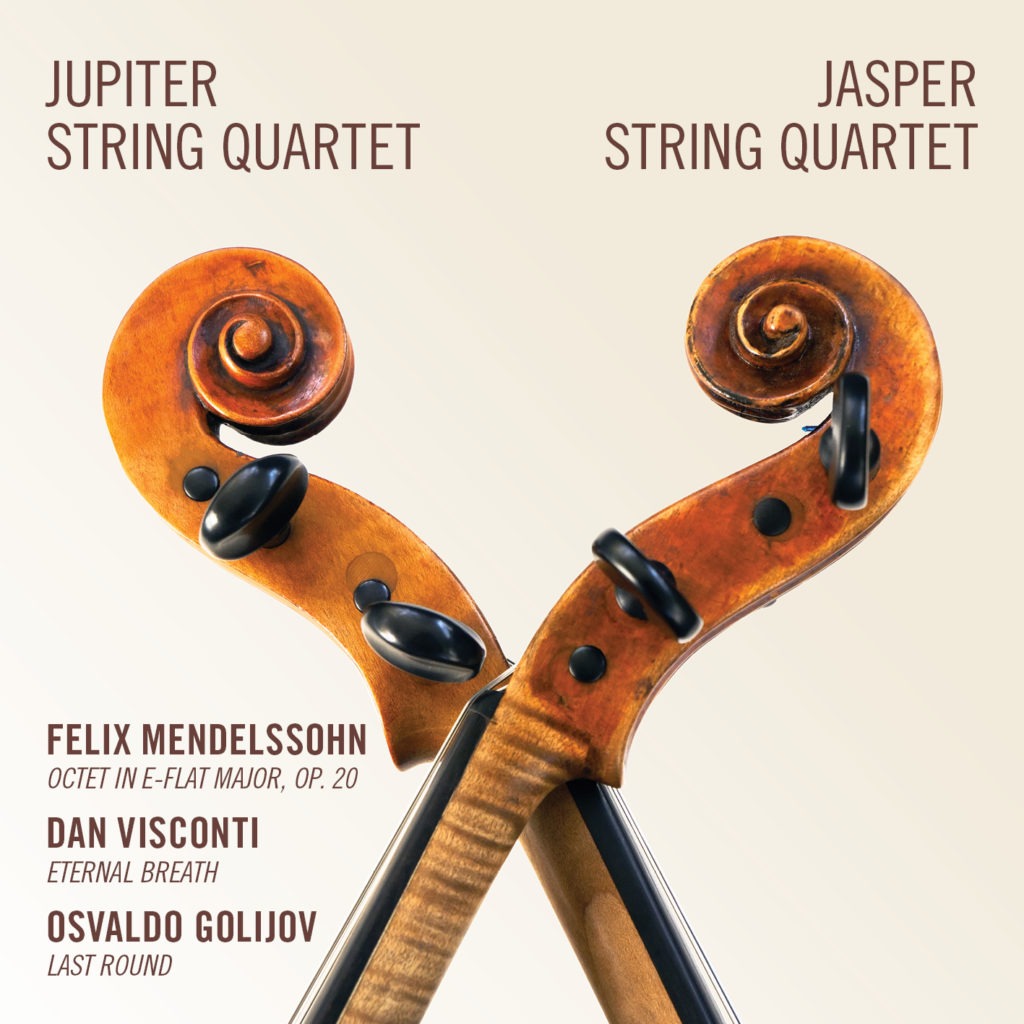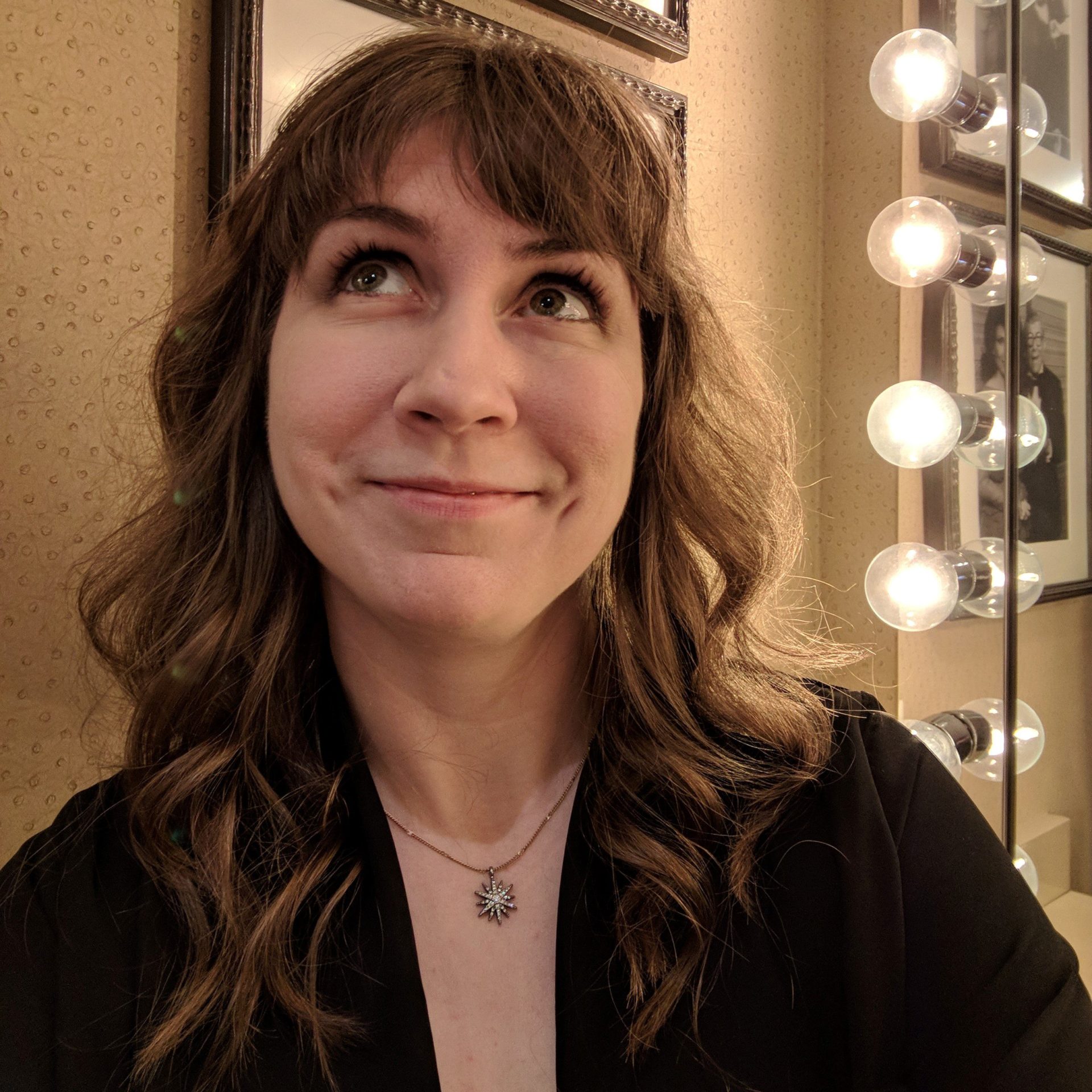A New Release from Marquis Classics
The Jasper and Jupiter Quartets: Mendelssohn/ Visconti/ Golijov
The new double string quartet album recorded by the Jasper and Jupiter string quartets is a thing of beauty. The quartets are made up of siblings, spouses, and longtime friends, as described in liner notes: “There are siblings—J Freivogel from the Jaspers is the younger brother of Jupiter members Meg and Liz Freivogel; spouses— Rachel Henderson Freivogel and J are married in the Jaspers, and Daniel McDonough and Meg are married in the Jupiters; and longtime friends—Nelson Lee and Karen Kim were apartment mates while they were college students in Boston, and both they and Sam Quintal are enduring friends and colleagues of all of the quartets’ members, with relationships stretching back two decades.”
This closeness, built on bonds of family and friendship over decades, is evident in the way the players match each other’s tone, vibrato, and phrasing. Listening to them play is like listening to siblings singing together: multiple voices, one sound. This is the most evident in the 2011 piece, “Eternal Breath,” by Dan Visconti. “Eternal Breath” was commissioned by the Freivogel parents, Bill and Margie, to celebrate their 40th wedding anniversary. The Freivogels wished the piece to include all their children and their children’s spouses, all but one of which are professional musicians. In Visconti’s words, “Eternal Breath is based on a simple “breathing” phrase, which becomes longer and more elaborate as the expanding melody is passed around the entire ensemble. The idea of the breath of life passed from one generation to the next, as well as the expansion of the family through marriage inspired the development of the initial, chant-like material. Accompanied by a drone which marks the rise and fall of each musical “breath”, the melody moves through a reverberant and glowing atmosphere until everyone joins in playing the same overlapping phrase, inflected with their own individuality.”
The piece, scored for two quartets and a shruti box (a cousin of an accordion), is haunting. Interesting harmonies do not always resolve, but rather bleed like watercolors into the next phrase; groups of notes shift like a cinematic kaleidoscope. A delay pedal effect created by violins repeating phrases microseconds behind one another is particularly lovely. The performers match their tones phenomenally, and emotive details are organized down to the merest hint of vibrato. The piece builds in intensity to a gorgeous climax, then all the voices splinter and come back like chirping birds in harmonics before melting into an airy textured drone to finish.
Osvaldo Golijov’s piece, “Last Round” (1996), is a different flavor entirely. Written as tribute to the Argentinian tango composer Astor Piazzola, “Last Round” is tango-esque and full of passion. Scored for a nonet (two quartets plus a double bass, performed by bassist Michael Cameron), the first movement builds to a frenzied call and response between upper string pairs before breaking down in register, tempo, and dynamics, only to rebuild to the dramatic climax. The movement ends with a glissando and moves directly into the second movement. This movement features a slow, lyrical, melody that moves around the upper voices while the lower voices keep a hypnotic pizzicato pulse. The middle section waxes romantic, full of lush harmonies, rich violas, and a persistent bass heartbeat. Even rubato sections feel anchored, contrasting with the floating fluidness of the Visconti.
The most familiar piece on the album is Felix Mendelssohn’s Octet in E-flat Major, Op. 20, composed when Mendelssohn was just sixteen years old. This piece is pure joy, and the performances of the Jasper and Jupiter Quartet members rise to the occasion, infusing each phrase with optimism, elegance, and energy. The first movement feels wonderfully balanced, dynamically: the melody is never overpowered no matter which voice carries it, while at the same time the accompanying voices are engaging and vivacious. The ethereal second movement features a marvelous contrast in tone between the bagpipe-like lower strings in the minor opening measures and the upper strings, which are warm and angelic. The third movement is effervescent and effortless while extremely precise; moments where a soaring phrase comes out of the bubbling texture to float on the surface are particularly fine. The fourth movement is at its best when the Jasper and Jupiter members draw attention to multiple voices playing the melody in unison or octaves, letting the wickedly fast accompanying eighth notes burble away like energetic steam. The quote from Handel’s Messiah (“And He shall reign forever and ever”) is presented with a playful spirit, but not in a way that draws focus from the larger picture of the movement.
This album is a study in stylistic contrasts: Mendelssohn’s clarity and brilliance, Visconti’s diffuse color palette, and Golijov’s strident passion. It would seem, however, that the Jasper and Jupiter Quartets have focused their energy not on what makes these works different, but rather the joyful thread unifies them; be it a youthful joy, a quiet joy, or a primal one. The performances captured here are artistically nuanced, executed with gorgeous technique and plenty of personality. In this time of COVID, making art and experiencing joy are both acts of defiance; the Jasper and Jupiter Quartets are defiant in all the right ways, and invite us to join in their joy.



